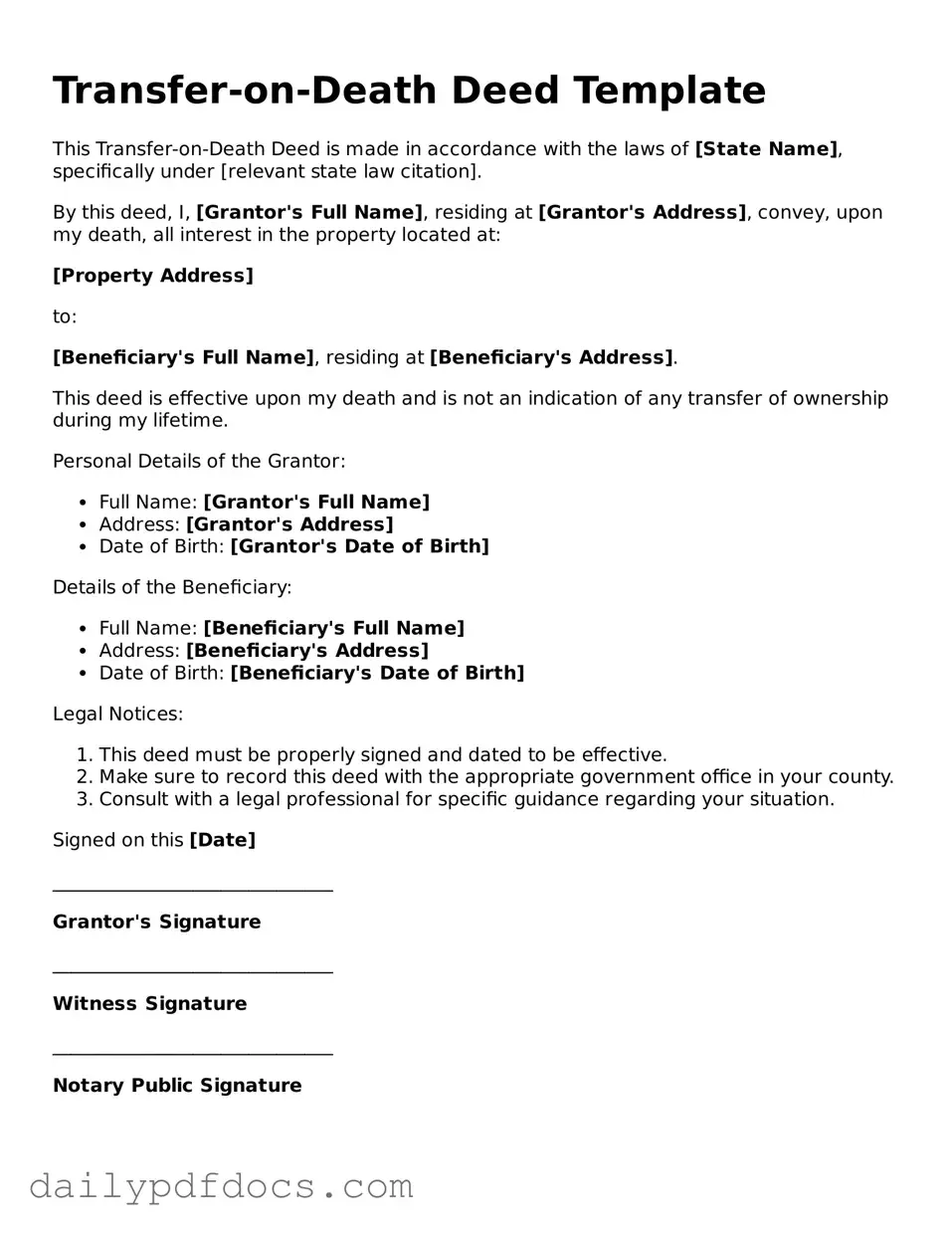What is a Transfer-on-Death Deed?
A Transfer-on-Death Deed (TOD deed) is a legal document that allows property owners to designate a beneficiary who will automatically receive the property upon the owner's death. This type of deed bypasses the probate process, making it a simpler and often quicker way to transfer real estate to heirs.
How does a Transfer-on-Death Deed work?
When the property owner signs a Transfer-on-Death Deed and files it with the appropriate county office, the deed becomes effective immediately. However, the beneficiary does not have any rights to the property until the owner passes away. Once the owner dies, the property transfers directly to the beneficiary without going through probate.
Who can be named as a beneficiary in a Transfer-on-Death Deed?
Any individual or entity can be named as a beneficiary in a Transfer-on-Death Deed. This includes family members, friends, or even organizations. It’s important to choose someone you trust, as they will inherit the property without any additional legal hurdles.
Can I change or revoke a Transfer-on-Death Deed?
Yes, you can change or revoke a Transfer-on-Death Deed at any time while you are alive. To do this, you must create a new deed that explicitly states the changes or file a revocation form with the county office. It’s advisable to consult with a legal professional to ensure that the changes are properly documented.
Are there any tax implications with a Transfer-on-Death Deed?
Generally, a Transfer-on-Death Deed does not trigger immediate tax consequences for the property owner. However, the beneficiary may be responsible for property taxes after the transfer. Additionally, estate taxes could apply depending on the overall value of the estate. Consulting with a tax advisor is recommended to understand potential tax liabilities.
Is a Transfer-on-Death Deed valid in all states?
No, not all states recognize Transfer-on-Death Deeds. While many states have adopted laws allowing this type of deed, some do not. It’s crucial to check the specific laws in your state or consult with a legal expert to ensure that a Transfer-on-Death Deed is a viable option for your situation.
What happens if I don’t have a Transfer-on-Death Deed?
If you do not have a Transfer-on-Death Deed, your property will typically go through the probate process after your death. This can be time-consuming and costly, as the court will oversee the distribution of your assets according to your will or state laws if there is no will. Creating a TOD deed can help avoid this lengthy process.
Can I use a Transfer-on-Death Deed for any type of property?
Transfer-on-Death Deeds are generally used for real estate, such as homes or land. However, they cannot be used for personal property like vehicles or bank accounts. It’s important to understand the limitations of a TOD deed and consider other estate planning tools for different types of assets.
